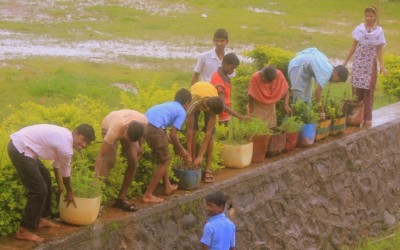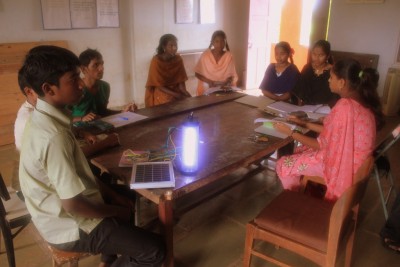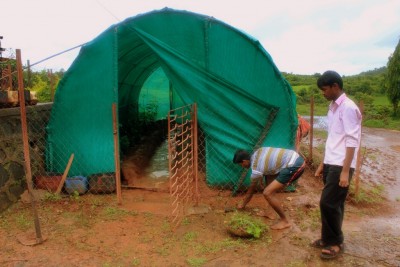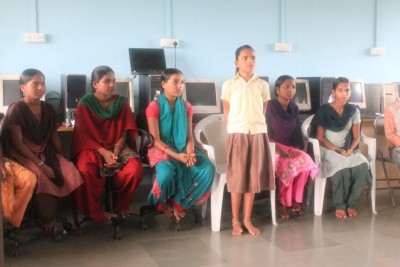Making Education Relevant Where You Least Expect It
Editor’s Note: This article was originally published in the Stanford Social Innovation Review and has been reposted courtesy of the publication and the author.
Teachers, administrators, policy makers, parents, educationists, and even students have been unguarded about their criticisms of traditional educational systems for years. Most notably, rote learning – the term many of us have come to cringe at the sound of – has been the center of the assault. We’ve all heard the complaints: “My students aren’t engaged,” “Our children aren’t prepared for the real world,” and the quintessential “But school is boring!” And they are right. Research since the 1980s shows that passive learning-teachers lecturing from the blackboard and students taking notes-is an ineffective and un-engaging method of transferring knowledge. In terms of real world preparedness, STEM-related jobs (science, technology, engineering, math) continue to rise, while the number of students prepared for them is decreasing. Coupled with the 1 million-plus high-school dropouts each year in the U.S. and more than 15 million in India, this is cause for alarm. A 2010 U.S. government-commissioned report by the National Academies Press warned that: “Today, for the first time in history, our younger generation is less well-educated than its parents.”
This should not come as a surprise, but when it comes to identifying the solution, the jury is still out.
One of the pitfalls in education reform to date is the belief in a one-size-fits-all solution, which has been proven untrue time and again. This is no less true in India, where I write from today. The country’s urban capitals prescribe education policy on the whole, while the majority of citizens (70 percent, or approximately 830 million) reside in rural areas. Student persistence is low (only one-third complete high school) and workforce preparedness is inadequate (24 million unemployed).
The million-dollar question is how do we make education engaging and relevant at scale-a colossal challenge with the realities of poverty, politics, illiteracy, teacher absenteeism, gender inequality, and undeveloped infrastructure that results in frequent power outages and flooded roads during monsoons.
Earlier this month, I was on my third school visit with Lend-A-Hand India (LAHI), a social enterprise committed to transforming rural education (in its first 5 years it has partnered with 60-plus schools across 3 states; more here). While this trip focused on installing corporate-donated computers at Mangaon School in rural Maharashtra, I was more interested in observing the implementation of the Introduction to Basic Technology (IBT) program. This program is the foundation of LAHI’s reform strategy, and it’s gaining momentum – the Maharashtra government has acknowledged it as an integral part of rural high school curriculum. This recognition has resulted from LAHI’s efforts to scale the program and advocacy by the IBT’s curriculum innovator, Vigyan Ashram.
(Above: The hills behind the Mangaon School where several of the students once lived).
Mangaon School is unique as a purely ashram school serving tribal, nomadic communities of rural Maharashtra. The 400-plus students’ families income levels are extremely low (on average, between 60-100 rupees, or U.S. $1-2, per day), with access only to seasonal jobs such as sugarcane harvesting or bricklaying. Due to these communities’ transient nature, education typically has neither been feasible nor prioritized, regardless of quality. On the contrary, child labor is the norm.
What I saw, heard, and experienced at the Mangaon School was inspiring, even without the added context of the students’ impoverished families and limited futures. Students were constructing greenhouses, wiring solar-powered LED lights, building benches and tables, drawing engineering plans, mass-producing chikki sweets, and tending their worm-fed compost that they package and sell in the village-all as part of the IBT curriculum. And they were into it. While the agriculture instructor looked on, a class of 10th graders worked together to plant crops that help feed fellow students.
(10th standard IBT students at Mangaon School replanting crops during their agriculture module).
The IBT program at Mangaon School (and each IBT partner school) recruits local entrepreneurs to teach the vocational curriculum empowering students to develop new innovations that benefit their local economy. I learned that their solar-powered, rechargeable lights were big sellers at the local market, where villagers typically endure daily power outages.
(Students exhibit one of the many solar-powered LED lights they built, wired, and sold to villagers as part of the IBT program).
Headmaster Ankush Kale explained that, prior to IBT program integration into the curriculum, the school ran first-seventh grade only. At the end of 7th grade, children would return to their families and become laborers – few other options existed, and advanced education was rare, as families were eager to gain another source of income.
When the IBT program came to Mangaon four years ago, the school started offering education through 10th grade, with positive results. Two classes, totaling 70 students, have graduated thus far. Of these 70 graduates, 100 percent passed the 10th-grade board examinations, and 97 percent are furthering their education at technical, vocational, or other diploma-granting institutions. This is a great achievement regardless, but taking into account the background of these children, the results are phenomenal. As Kale explained, “When we find these kids, they don’t even have clothes on their back. Now, they are thinking about starting their own businesses.”
(The student-built greenhouse at Mangaon School.)
This was not just another attempt at fixing rote learning – it was a well-executed strategy for long-term transformation. These graduates are pioneers of their communities and are motivated and armed to make something out of their lives. Through IBT and the Mangaon School, they have been propelled into the next level of educational and career advancement, and have developed skills along the way that grant them access to employment opportunities they would not have had otherwise. In addition, students have made other softer, but significant achievements, including finding their voice, gaining confidence, defining their interests, and connecting with other education-bound peers. Before we departed that afternoon, a class of students stood proudly in front of us, exclaiming their future aspirations: “Teacher!” “Nurse!” “Electrician!” “Architect!” These students have built the courage to step out from the cycles of hardship that their ancestors have endured to make a livelihood for themselves, and undoubtedly, their future generations will be transformed because of it.
(Secondary students at Mangaon School telling us of their career aspirations from engineering to architecture).
Please like NextBillion on Facebook, follow us on Twitter and/or join our LinkedIn group.
- Categories
- Education





